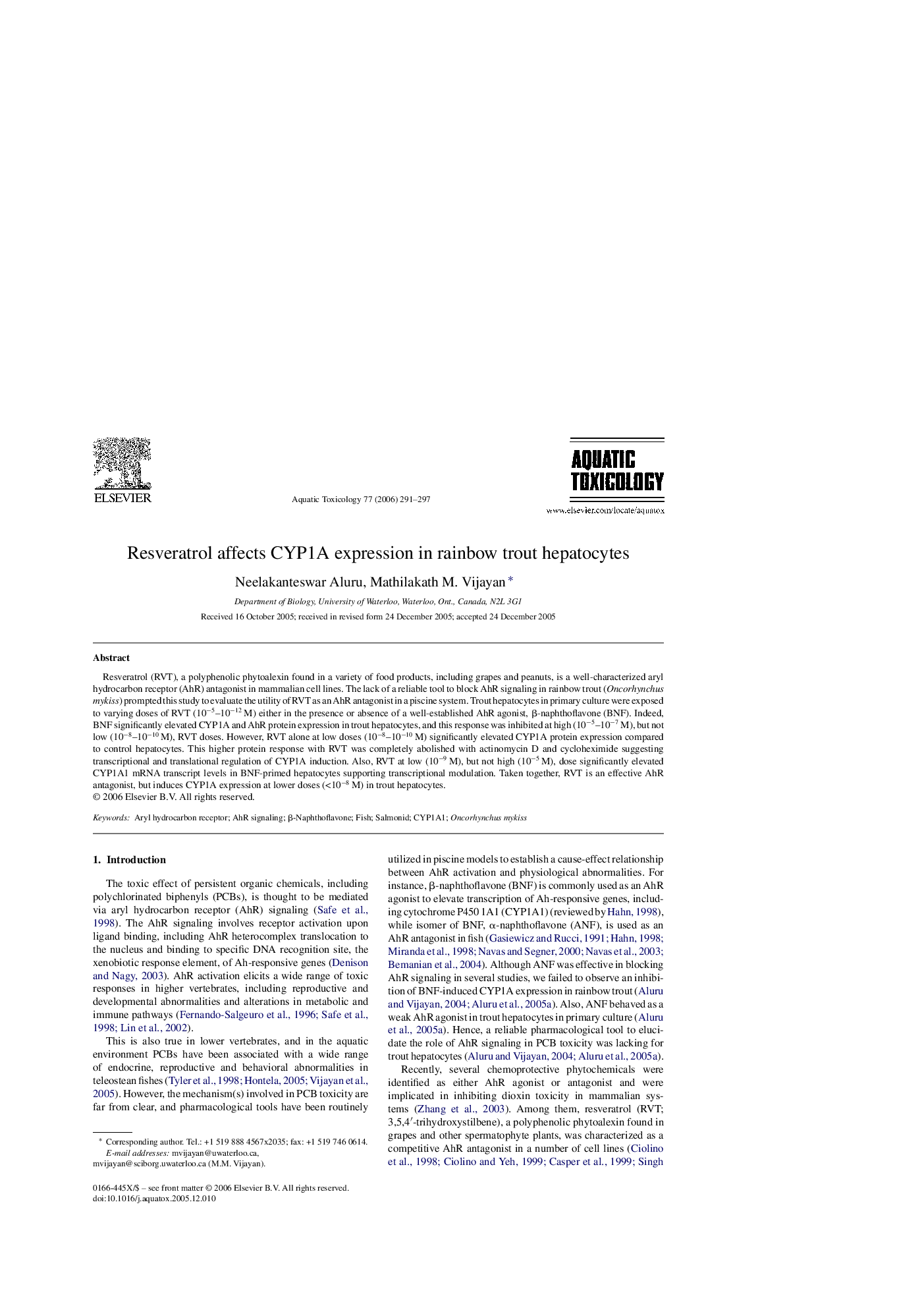| Article ID | Journal | Published Year | Pages | File Type |
|---|---|---|---|---|
| 4531395 | Aquatic Toxicology | 2006 | 7 Pages |
Resveratrol (RVT), a polyphenolic phytoalexin found in a variety of food products, including grapes and peanuts, is a well-characterized aryl hydrocarbon receptor (AhR) antagonist in mammalian cell lines. The lack of a reliable tool to block AhR signaling in rainbow trout (Oncorhynchus mykiss) prompted this study to evaluate the utility of RVT as an AhR antagonist in a piscine system. Trout hepatocytes in primary culture were exposed to varying doses of RVT (10−5–10−12 M) either in the presence or absence of a well-established AhR agonist, β-naphthoflavone (BNF). Indeed, BNF significantly elevated CYP1A and AhR protein expression in trout hepatocytes, and this response was inhibited at high (10−5–10−7 M), but not low (10−8–10−10 M), RVT doses. However, RVT alone at low doses (10−8–10−10 M) significantly elevated CYP1A protein expression compared to control hepatocytes. This higher protein response with RVT was completely abolished with actinomycin D and cycloheximide suggesting transcriptional and translational regulation of CYP1A induction. Also, RVT at low (10−9 M), but not high (10−5 M), dose significantly elevated CYP1A1 mRNA transcript levels in BNF-primed hepatocytes supporting transcriptional modulation. Taken together, RVT is an effective AhR antagonist, but induces CYP1A expression at lower doses (<10−8 M) in trout hepatocytes.
